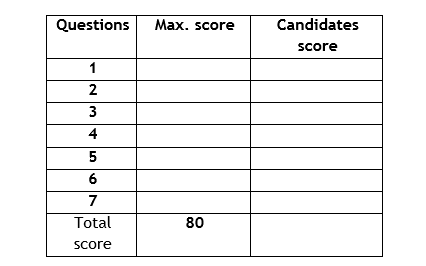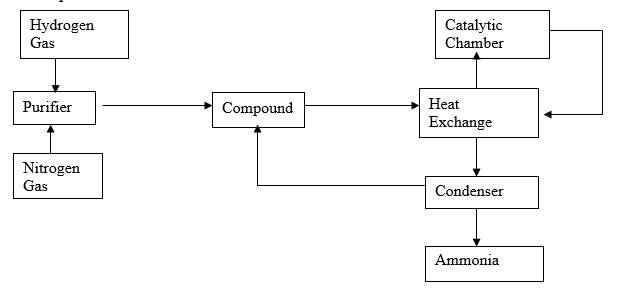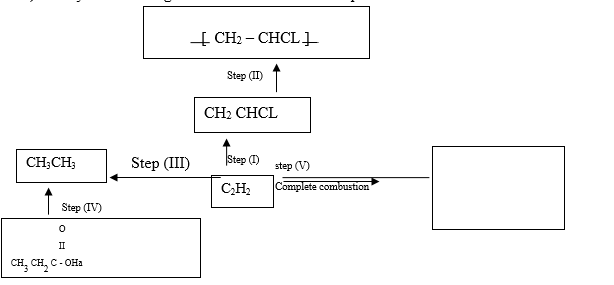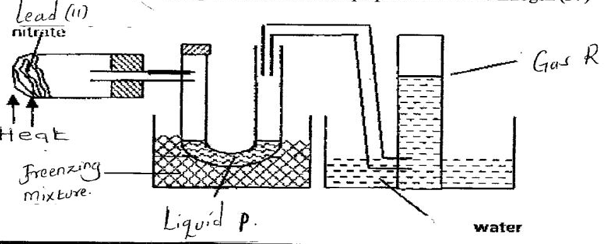 Get premium membership
Get premium membership and access revision papers with marking schemes, video lessons and live classes.
Form 3 Chemistry Paper 2 End of Term 2 Exams 2021
Class: Form 3
Subject: Chemistry
Level: High School
Exam Category: Form 3 End Term 2 Exams
Document Type: Pdf
Views: 1018
Downloads: 19
Exam Summary
NAME………………………………………………...…………………………ADM NO.……………………………….
SCHOOL………………………………….…………………………………………………….…………..
STUDENT’S SIGN……………………....DATE………………………………………………………..
233/2
CHEMISTRY PAPER II
TERM TWO 2021
Time: 21/2 Hours
FORM THREE
PAPER II
INSTRUCTIONS TO CANDIDATES:
1. Write your name and admission number in the spaces provided above
2. Sign and write the date in the spaces provided above.
3. Answer ALL the questions in the spaces provided below each question
4. KNEC Mathematical tables and students electronic calculations may be used
5. All working must be clearly shown where necessary
For examiner’s use only:

1. The grid below is part of the periodic table.
Use it to answer the question that follow.
(The letters are not the actual symbols of the elements)

a) What name is given to the group of elements when elements where t and z belong? (1mrk)
b)
(i) Write the formula of the compound formed in when elements Q reacts with element R. (1mrk)
(ii) Name the bond type in the compound formed in b (i) above. (1mrk)
c) Which is the most reactive metallic element shown in the table? Explain (1mk)
.
d) T forms two oxides. Write the formula of each of the period of the periodic table and is in the group of elements which lose two electrons to become stable. Show the position of element T in the grid above. (1mrk)
e) H is an element that belongs to the third period of the periodic table and is in the group of elements which lose two electrons to become stable. Show the position of element H in the grid above (1mrk)
f) Draw a cross (x) and dot (.) diagram for the compound found when elements Z and Y react. (1mk)
2. The table below gives the volume of the gas produced when different volumes of 1m hydrochloric acid were reacted with 0.3g of magnesium powder at room temperature (3mks)

a) Write an equation for the reaction between magnesium and hydrochloric acid (1mk)
b) On the grid provided, plot a graph of the volume of gas produced (vertical axis) against the volume of the acid added (Horizontal axis) (3mrks)
Insert grid
c) From the graph, determine:
(i) The volume of the gas produced if 12.5cm2 of 1m hydrochloric acid had been used. (1mrk)
(ii) The volume of 1m hydrochloric acid which reacted completely with 0.3g of magnesium (1mrk)
d) Given that mole of the gas occupied 24,000cm2 at room temperature, calculate the relative atomic mass of magnesium (3mrks)
3. The flow chart below shows the large scale manufacture of Ammonia. Study it and answer the questions that follow

a) State any one source of:
(i) Nitrogen gas (1mrk)
(ii) Hydrogen gas (1mrk)
b) Name any two impurities that are removed at the purifier. (1mark)
c) State the temperature and pressure that would lead to optimum yield of ammonia in the above process
d) Explain why it is necessary to compress nitrogen and hydrogen in this process (1mrk)
e) Give the name of the catalyst in the catalytic chamber (1mrk)
f) Why is it necessary to recycle the unreacted gases? (1mrk)
g) Give any two commercial uses of ammonia (2mrks)
h) State and explain the observations made when ammonia is passed over heated copper(II) oxide (2mrks)
i) A certain mass of ammonia gas occupies 200cm3 at 250 atmospheres; calculate its volume at 300 atmospheres and 273k. (2mrks)
4. (a) What is a salt as used in chemistry? (2marks)
b) (i) Distinguish between a deliquescent and hygroscopic salt. (2mrks)
(i) Give use of hygroscopic substances in the science laboratory (1mrks)
c) When potassium nitrate is heated potassium nitrite and gas A are formed. (1mrk)
(i) Identify gas A (1mrk) …………………………
(ii) Name the reaction undergone by the potassium nitrate (1mrk)
d) 3.4g of lead granules were reacted with excess nitric (iv) acid to form lead nitrate solution. All the lead nitrate solution was reacted with sodium sulphate solution.
Write an ionic equation of a reaction between lead nitrate and sodium sulphate solution (1mrk)
e) Determine the mass of the lead salt formed in (i) above. (2mrk)
(Pb = 207, S = 32, O =6)
5
a) Give the IUPAC names of the following compounds:
(i) CH3 CHCH2 CH3 ____________________________ (1mrk)
CH3
(ii) CH3 CH2 CH = CH CH3 ______________________ (1mrk)
(iii) CH=CCH3 ____________________________ (1mrk)
b) Study the information in the table below and answer the questions that follow:

(i) Write the general formula of the hydrocarbon in the table (1mrk)
(ii) What name is given to the homologous series in which the compounds in the table belong? (1mrk)
(iii) Predict the relative molecular mass of the hydrocarbon with 2 carbon atoms(1mrk)
(iv) Determine the molecular formula of the hydrocarbon in (ii) above and draw its open structural formula (4 = 1, C = 12) (2mrk)
c) Study the scheme given below and answer the questions that follow:

(i) Name the reagents used in:
Step (i) ……………………………………………………………. (1mrk)
Step (ii) …………………………………………………………… (1mrk)
Step (iii) ………………………………………………………….. (1mrk)
(ii) Write an equation for the complete combustion of C2H2 in step (v) above (1mrk)
(iii) What is the name of the process which takes place in step? (1mrk)
d) When a hydrocarbon was completely burnt in oxygen 5.28g of carbon (iv) oxide and 2.16g of water were formed. Determine the empirical formula of the hydrocarbon.
(CH = 1.0; C= 12.0, O = 16.0) (3mrks)
6. The diagram below represents a set up that can be used to prepare and collect nitrogen (IV) oxide.

a) Write the equation for the reaction that takes place in the boiling tube.(1mrk)
b) Name
(i) Gas R ……………………. (1mrk)
(ii) Liquid P …………………….. (1mrk)
c) Which property of Nitrogen (iv) oxide gas makes it possible to be collected as shown above? (1mrk)
d) State any two physical properties of Nitrogen (iv) oxide (2mrks)
e) When pieces of burning magnesium lowered into a gas jar containing Nitrogen (IV) oxide, it continues to burn.
(i) Explain the observation made in the gas jar (2mrks)
(ii) Write an equation for the reaction that takes place in (i) above. (1mrk) ………………………………………………………………………………….
f) What precaution should be taken when preparing Nitrogen (IV) oxide gas? Explain . (2mrks)
g) When excess lead nitrate solution was added to a solution containing sodium chloride, the precipitation formed was found to weigh 3.34g. determine the amount of sodium chloride in the solution, (Pb = 207, Cl =35.5, na = 23) (3mrks)
7. Study the information in the table below and answer the questions that follow. These letters do not represent the symbol of an element.

a) In which period of the periodic table does element E belong? (1mrk)
b) Write the electronic configuration for the ions formed by elements B and D B…………………………….. D……………………………….. (1mrk)
c) Select an element which is:
a) The most reactive non-metal (1mrk) ………………………………………………………………………………….
b) A poor conduct of electricity (1mrk) ………………………………………………………………………………….
d) Which element is a liquid at room temperature? Explain (1mrk)
More Examination Papers